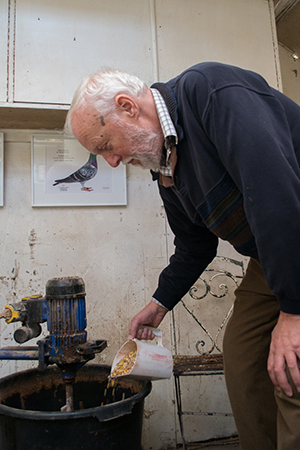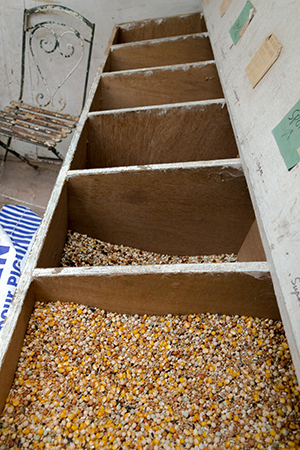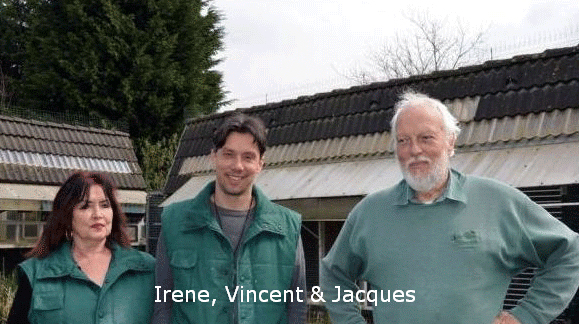
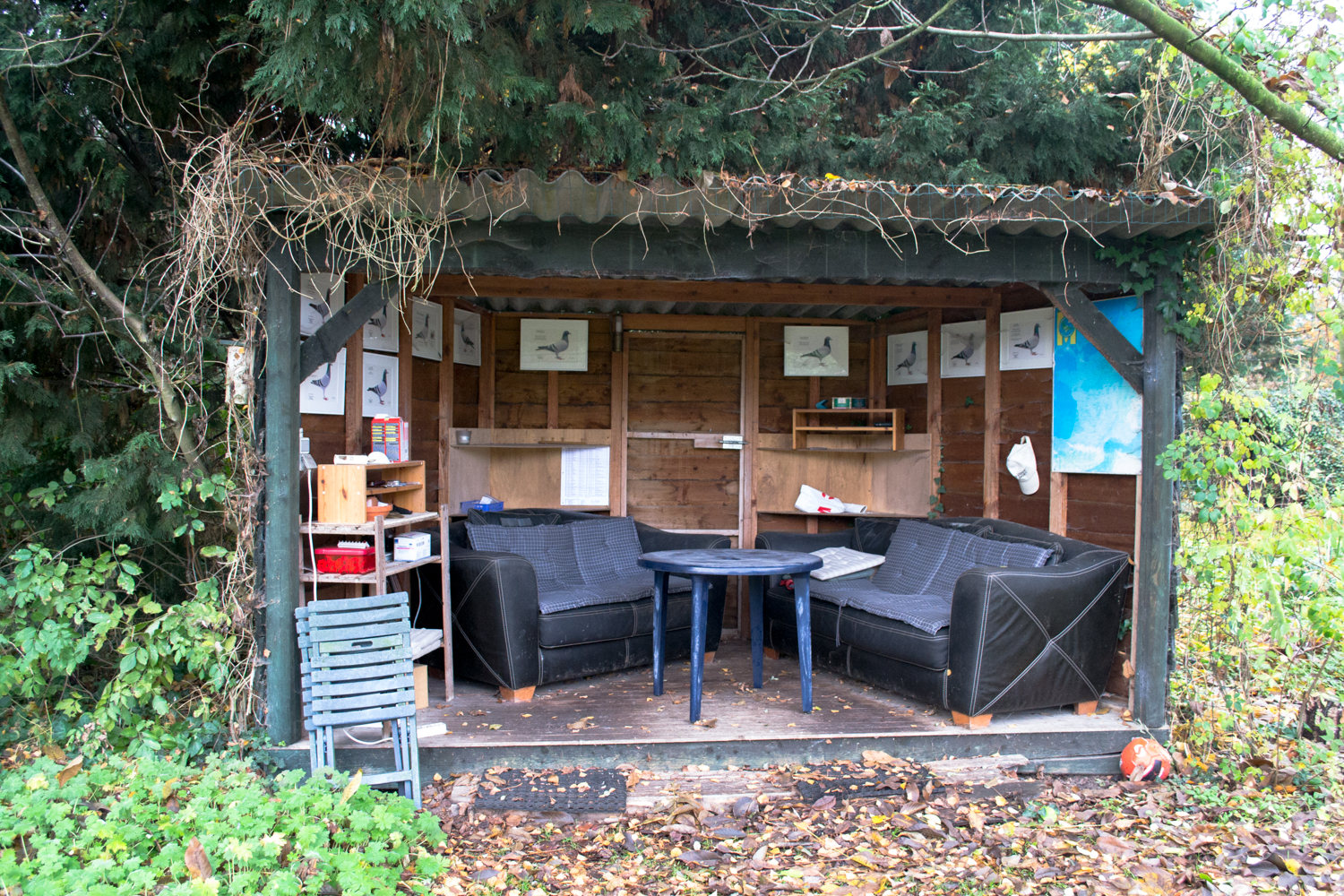
"THE LOOKOUT"
As
a young boy I had already much interest in everything that has to do with
nature, even though I lived in Amsterdam by than.
My parents have been stimulating that. Later at school
I often went with friends of my age into nature. Many times even with
our Biology teacher and also writer of several books about birds. It was
a very nice time.
One of those friends had pigeons. English Tumblers.
From our house I could see them fly. Via him I had my first real contact
with pigeons and soon I had a pair myself. They were Tipplers, pigeons
that can fly very high and for a very long time.

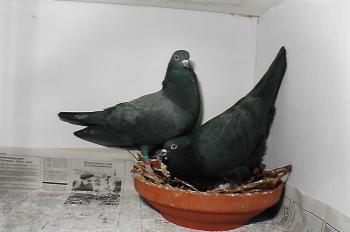
By bicycle, my father and I travelled all over Holland to meet people
with the same kind of birds, to see how they did on the races.
Later, when I was 20 years old and married to my wife Irene, I was able
to buy 3 Black Sheffield Tipples from
a man in England called Cyrill Meredith. Form those 3 I had built up a
strain for 25 years. Only from those 3 birds. In 1974 we moved to Brasschaat-Belgium,
together for the Antique
company I was working for.



The Tipplers went along and it was there, that we obtained several records during the races of more than 19 hrs flying. We even had the Continental Record Young birds of more than 18 hrs on our name for many years.

BACK TO TOP
After
we noticed, that there were some extra ordinary pigeons amongst the purchased
breeders, we selected and improved the pigeons, but also ourselves and
the lofts, each year.
We created 4 more or less seperate bloodlines. Each line had it’s own
basic pigeons.
We believed strongly in a thoroughbred strain of birds, while we tried
to keep the 4 lines as pure as possible for their good characteristics
and get rid of their bad ones throught the years.
From the experience I had with 25 years of family breeding with the Black
Tipplers, I knew that after several years of inbreeding, it is excellent
to cross such a line with another inbred line, from your own strain. It
will be crossing but with thoroughbred pigeons with practically only the
right charasteristics. Those crossings could give a certain “Boost”.
That way, 4 lines were formed from our basic pigeons, we had from: L &
A v.d. Wegen, B. Wijnacker, Kuypers Bros., G. Koopman, J. Thoné, Florizone
and even a little Tippler blood. We named those 4 Lines:
The Zeppelin Line.
 ------+
------+
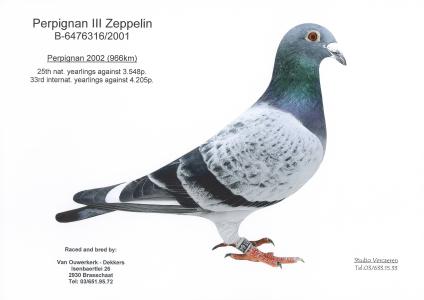
Golden Pair 1 Line.
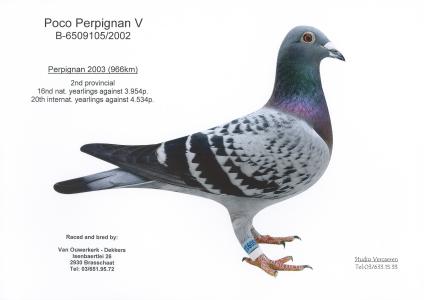 ------
------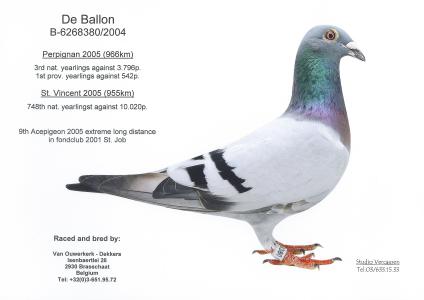
Golden Pair II Line.
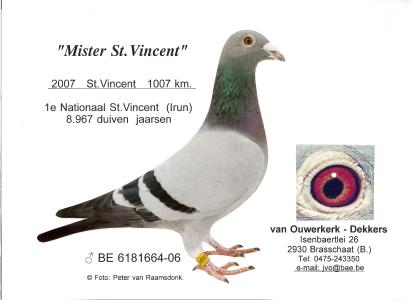 ----
--
----
-- 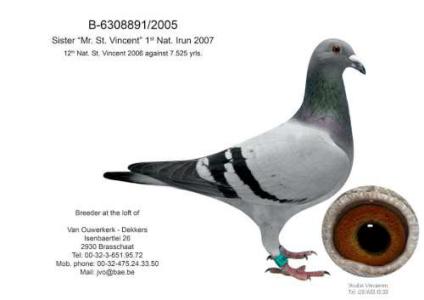
Golden Pair III Line.
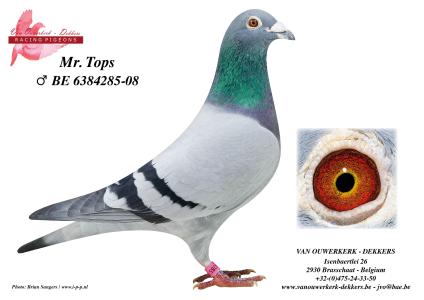 ------
------ 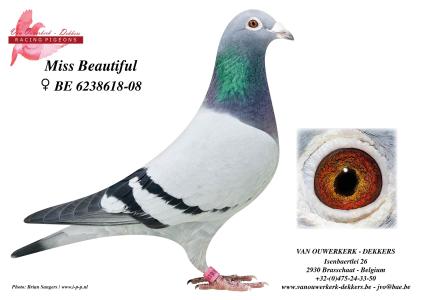
We
constantly try to keep those 4 bloodlines seperately pure in order to
create the top pigeons when we mix them.
Lately, after many years of inbreeding, we even decided in 2015 to try
and create a new 5th Line, bringing in new blood from the best lines of
J. Jellema and J. Pepping.
BACK TO TOP
For me (Jacques) the breeding means probably the most important part in
building up a truly good strain of pigeons. Of course it is important
that only the best pigeons are used, which have proved to have several
good characteristics such as, very good results on the Long Distance and
Extreme Long Distance races, but also their extra perserverance, silk
soft and intensive coloured feathers, perfect health, good appierence,
intelligence, bright lively eyes, strong and powerful, but also smooth
muscles, good wing and certainly their fertility etc. Every year we breed
from a certain number of well proven breeders, but also from some of our
proven best flyers at that moment.
Like many people already know, for years, we have all our youngsters fly
several times the 5-600 km races.
Later as yearling they all have to do 2 times 8-950 km races.
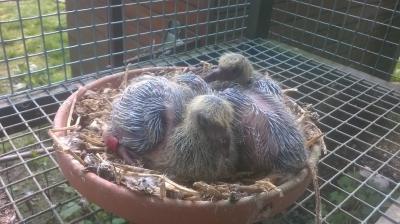
In the past, during the first few years, all our old birds had to do 3
Long Distance Races including Barcelona for a big group. Lately we do
only 2 big races. (just easier for ourselves in fact) Except for the group,
that do Pau, St. Vincent and Perpignan, they do 3 big races.
We have never really liked “sparing” our pigeons. Although we know very
well, that this is not so bad either as the birds get more rest and time
to build up their energy and maybe grow up/out more, as a youngster or
yearling or even a 2 year old. But we do not do it, as we only want the
ones that can stand this system, as we think we take good care of them,
give them a perfect home, all year long, therfore they should perform
only 3 months for us to earn that. We also had to earn our living by working
hard, so we expect that from them as well.

We all know, that a great number of wood (wild) pigeons, fly yearly from
the North of Europe to the South and half a year later, the same way back,
so a few thousand km each time, without having a warm and dry loft, not
always food, no pills and powders etc. No they have to do it on their
own, outside and surch for food and water etc. And….they became strong
as hell.
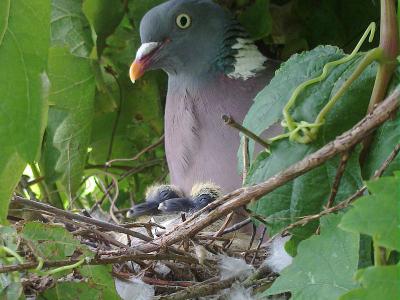
Besides the wild pigeons, there are all the other migratory birds. Even
their young of a few months old, will fly along. Often they fly at night
in any kind of weather.
There are even butterflies that travel thousands of km, just like some
tiny birds. Of course we are sending our pigeons away and force them to
fly, if they can or not. That is a difference. Wild birds do that by instinct
and the seasons often force them to fly. So almost the same.
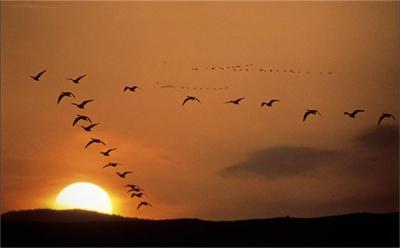
When we want to have strong pigeons, with good endurance and orientation,
we should no spare them to much, I think. Thatway, we create lazy or weak
City pigeons instead of tough Racing pigeons.
When I am standing outside in the evening in the wind and rain and hear
those migratory birds come over, I always think “those are truly tough
rascals”.
. Look also at various types of dogs. One kind like to lay on your lap
all day and already starts to tremble when they have to go out for a walk
ouside, while other kinds can and like to pull a sledge and run trough
the snow for hours. Infact they need to run or else their condition will
go down hill. So, we like to breed racing pigeons, that in a way (as it’s
in their DNA) like to fly and can easily do this 10-16 or more hours during
one day and even stay bright by the end of the day. Also in wind and rain.
In todays top sport, it is all about intensive training. The top of the
top teams, for instance in football, do not only make the difference because
of the quality or motivation, but also because of a better, more intence
and heavier training. Of course, also there, the lesser gods, will not
be able to follow and will just fade. They will get more insuries, get
sick and are demotifated.
Well, shortly said, this is our way how we see and do it with the selection
and the breeding.
BACK TO TOP
Our first young pigeons are mostly born in March.
After about 26 days they will be separated and all come together in the
loft for young birds (ybs). For a few weeks we keep giving them the breeders
mixture to feed them, untill they fly good, we change the food during
a week into much a lighter simple mixture with 10-20% barley. After flying
we call them in with small seeds. We feed them twice a day. Than we give
them a 3-5 days Tricho Cure. Mostly via the food.
When they daily stay away for a few hours to fly and do this for about
a week, we start bringing them away, 5-10-20 km etc. Double distance each
time. After 50-60 km they will go to a 100 km etc. Each week they will
go on a race and each day they train at home. All season long.
Except when they did their 2x 370 km, they will stay home the following
weekend, but will be trained at home then extra, even with the flag. After
that, they will fly 2 times a 5-600 km race. In between often a 100 or
200 km race, just for training. Also after the 5-600’s we keep them flying
200-370 km.
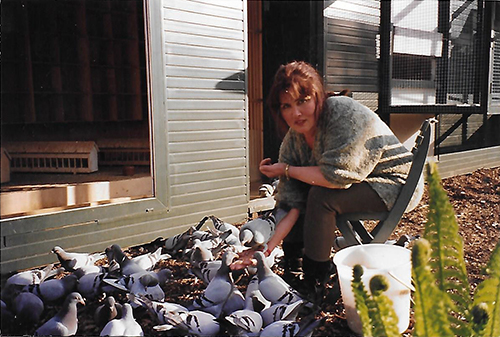
During that period, they will get plenty of food, but always have to eat
everything, not in a rush, in the morning everything must be eaten.
This way, we can say, we do not loose many pigeons. Young or old even.
We also do not have much trouble with all kinds of illnesses, partly because
we have very airy lofts, especially with the ybs. (see the Medical part)
Still, when we have a few ybs with colli, which mostly is caused by stress,
which will occur, when there are too many ybs of different ages are in
one section. We start forcing them (by accident) to speed up things and
this causes stress and….problems. (Not good!)
Our first round will normally be darkened untill the longest day. We do
not give them extra light afterwards. All other ybs we do not. We only
darken the first round, just to make it a bit easier for them to fly those
two 5-600 km races, as afterwards there is still quite some time to give
them the experience of racing each week, the other distances. It has also
been an experiment for us for all kinds of reasons. We have to watch the
moulting as well and this goes also for our later ybs of the 3rd of 4th
round. They all should be ready by the end of December. It’s very well
possible, that we will stop doing the darkening, as by now, we more or
less know, the advantages and the other sides.
All our pigeons get a bath ones of twice a week. During the moulting period
we give them chopped soup vegetables once a week as an extra. We mix beeryeast,
wheat bran and milkpowder throught the food, which is wettened with oil
or cytrusjuice. They get tea regularly, as well.
BACK TO TOP
As
already was obvious from the previous columns, we want to keep pigeons,
that can hold their natural characteristics and resistance as must as
possible.
They have to be able to cope with difficulties and do not slowly become
weaklings.
Of course, we realize, we make them do hard and difficult things and they
cannot all be made of steel.
We keep many pigeons and definitely have to watch out, that their health
stays good and illnesses do not spread too much and so become a huge problem.
Still we try to believe in a natural resistance as much as we can, again
without being careless.
As we expect top results from our pigeons, we have to give them certain
medical support when it’s really necessary. Especially during the races,
during times of much stress, but then it is also rather difficult, time
wise and it mostly effects their condition in a bad way when medicines
are given.
During the races we could only be forced to give something, when it really
is necessary. In that period we will have the Vet check things once or
twice, only when we think there could be something wrong. In fact, we
mostly do nothing. We give something against Tricho once a month though,
for about half a year, until now, although lately we hear some good players
not even do that anymore.
We will test it this season with some.
After the racing season, so when the moulting gets serious, we stop
completely giving any medicine for a pretty long period except for neck
drops against flees etc. In spring we repeat this.
The loft will mostly be cleaned much less. (once a week) while most of
the pigeons have straw on the floor which will stay there until February
next year.
(In other words, a breeding station for anything small or microscopic
small).
The pigeons will be taken good care of, though. Nothing is lacking, but
they have to do it without medicines. There are always a few, that cannot
handle it. They will get weak or sick and disappear. It looks like that
way all the others become stronger.
From December we have the droppings checked by the Vet. When necessary we give them something. Mostly to all if needed. At least a month before breeding, we always give something against Salmonella for some 12 days and since this year (2018) they are also getting an injection to build up resistance against the disease.
We can see the good side of that and many good fanciers do this too.
Just before the next racing season, the Vet will check the dropping once more. So in the end, it is done 2-4 times a year. After that we will have them vaccinated against Paramixo and Pocks.
When it comes to feeding, we like to keep that as simple as possible the last several years.
The whole year we give just a few different mixtures of Paloma. Compared to most other brands, their types of food are priced rather low but certainly therefor not less good.
During racing our pigeons get twice a day a sport mixture (Widowship). Sometimes we add another mixture to get even more types of corn. The hens get the same but also a lighter typical mixture, low on protein.
We always feed our pigeons in a way, that during the days everything is gone.
The breeders are getting Kweek Premium, together with Kweek Flojo. 2-3 times a day.
Regularly we mix oil, beer yeast, wheat bran and milk powder through their food. Sometimes Vitamineral.
We do this with all our pigeons. So from childhood they will get used to the taste and therefor will always eat it well. During moulting we give them tea from time to time and chop soup vegetables once a week. Also then we give them the same widowship sport mixture but add an extra 10% small seeds and 10% barley.
In the winter from January up to April, we stop the seeds and give 20% barley extra.
